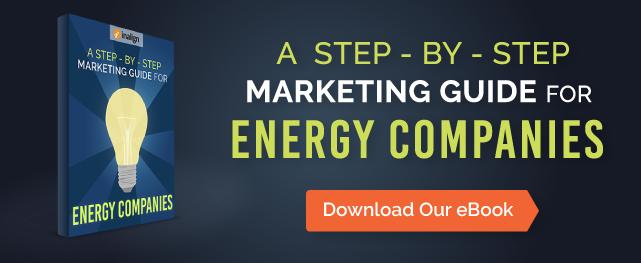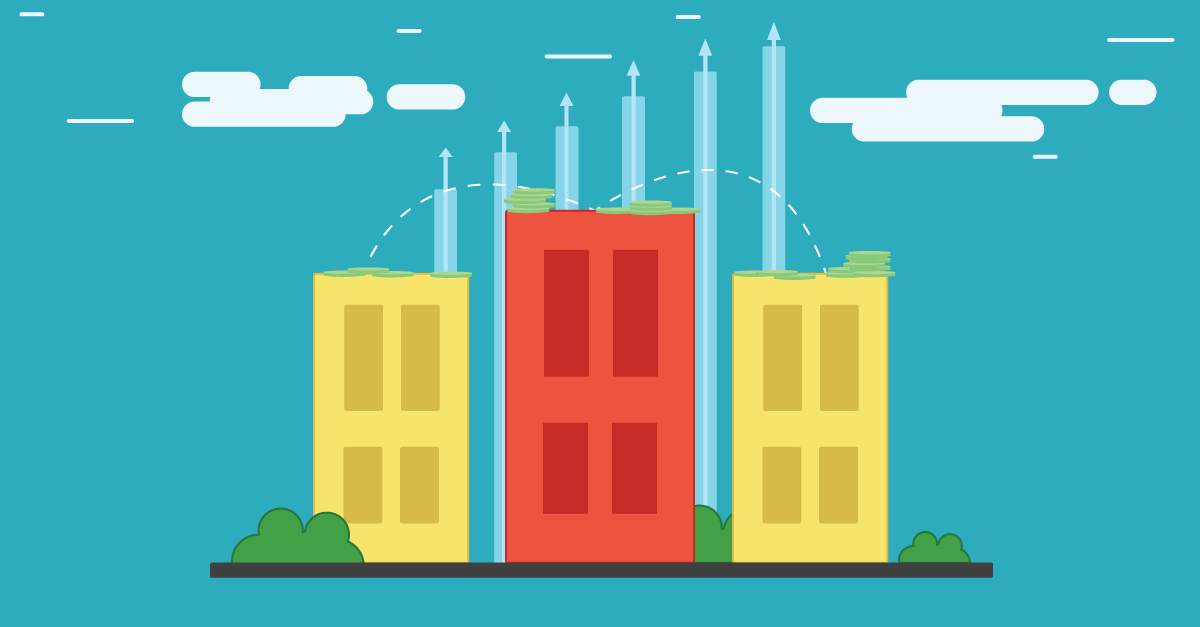Some energy service companies (ESCOs) use door-to-door sales reps as a quick and efficient means of educating consumers and enrolling new electricity and natural gas customers.
Because many consumers may not be aware that choice of energy supplier is an option or may not understand how to compare utility and ESCO pricing options, door-to-door selling can be an effective marketing strategy.
For ESCOs that use door-to-door sales and marketing, there are two possible outcomes each time a sales rep meets with a consumer:
- A sale occurs. That’s great! You have a new customer. Now you need to turn your attention to engaging that customer so they will remain with you for a long time.
- A sale doesn’t occur. Okay, maybe they weren’t ready to talk to a sales rep just yet. However, you have still educated and informed them about energy choice and exposed them to your brand. Your rep may also have left behind marketing materials that can direct them to your website that, hopefully, is designed to convert them into qualified leads and customers.
If you are an ESCO marketer, here are five strategies you can employ to increase your company’s door-to-door sales results:
1. Determine Who the Ideal Customers Are for Your Company
While every homeowner, renter and business in your marketing territory buys natural gas and/or electricity, they are not all a good fit for your company.
The people you want to reach most are those with the best chance of becoming a prospect and long-lasting customer. Typically, these are people who share the same problems and pain points as your best customers.
Defining your ideal customers (i.e., buyer personas) is more than just understanding their demographics. It's about understanding their needs, interests, concerns and what they rely on for making purchasing decisions (e.g., media outlets, word-of-mouth, online searches, etc.)
Determining who your ideal customers are is a critical first step to finding and attracting the right prospects to your brand. Why is it critical? Because all of the marketing content you create should be created specifically for the people you want to reach.
For more information on this strategy, including step-by-step instructions and an example, check out our blog post: “Retail Energy Marketers: How to Create Buyer Personas.”
2. Leverage the Buyer’s Journey to Win More Sales
All consumers go through the same three-stage process, what marketers sometimes refer to as “The Buyer’s Journey,” to make a purchasing decision.
The process begins with the Awareness Stage. This is one of the most important stages for retail energy marketers since many consumers in deregulated states aren’t even aware that they have a choice in who supplies their natural gas and electricity.
Building awareness is about helping prospects realize they have a new opportunity (e.g., taking control of their energy bill) and putting a name to it (e.g., energy choice).
Once a prospect moves through the Awareness Stage he or she enters the Consideration Stage. This is where they determine what options are available to them such as fixed rate contracts or renewable energy contracts.
Next is the Decision Stage where prospects have narrowed down their choices and are ready to enroll or talk to a salesperson at XYZ Energy Service Company.
What does this mean for retail energy marketers? It means that you must plan to interact with prospects throughout the buying cycle. Design appropriate marketing material that your door-to-door sales reps can use with prospects to guide them through the buyer’s journey. Prospects are much more likely to engage with marketers or sales reps who meet their needs for information and options.
3. Integrate CRM Software with Your Sales Process
If you outsource to an in-person sales and marketing company, you are probably receiving contact information and other useful data for your new customers.
But what else can or should you be doing with that information?
You can stay connected with your new customers and reduce customer turnover by adding your door-to-door sales data to CRM software that integrates with your website’s marketing platform. This will allow you to build customer retention campaigns that are specifically targeted to customers you have acquired through door-to-door sales
4. Build Customer Retention Campaigns
Customer turnover can be a significant issue for many ESCOs. You acquired your customers because you had the right energy solutions for them. They also likely signed a one-year contract with you. So don’t leave them hanging. After all, it costs six-to-seven times more to acquire a new customer than to retain an existing one.
A sure way to lose customers is to make promises during the sales phase and not fulfill them.
Turning new customers into long-lasting customers and advocates for your brand requires setting customer expectations and ensuring that marketing, sales and customer service are aligned around those expectations.
Successful customer retention campaigns include:
- Setting customer expectations and a process for ensuring that those expectations are being met.
- Asking customers if you are meeting their expectations and track those results over time.
- Building a customer retention program that focuses on personalized customer communications, proactive customer services and active customer engagement.
- Using automated marketing software and website integration tools to manage and monitor customer experiences and see results as you reduce customer turnover.
5. Measure the Success of Your Door-to-Door Selling Strategy
The only way to truly know the success of your door-to-door selling strategy is to measure it.
Here are the metrics to measure and track:
Customer Acquisition Cost (CAC)
How much does it cost to acquire a new customer by door-to-door selling?
CAC can be calculated by dividing the sales and marketing budget by the number of new customers.
For example, if your annual sales and marketing budget is $2,500,000 and you acquire 10,000 new customers, your CAC is $250 per customer. If $500,000 of your budget was used for door-to-door sales and you acquired 1,000 new customers, your door-to-door CAC is $500 per customer.
Customer Lifetime Value (LTV)
The LTV of a customer is determined by subtracting the average customer gross margin from the average customer revenue and dividing that number by the customer turnover or churn rate.
For example, if your average residential customer pays you $600 per year, your gross margin is $300 and your churn rate is 30 percent. The LTV for this customer would be $1,000 (i.e., $600 - $300 / 30%). Look at your churn rate by marketing channel. Is it higher or lower for door-to-door sales?
LTV:CAC Ratio
Next you need to look at the lifetime value of your customer compared to the cost to acquire that customer.
In our example, it costs $250 to acquire the new customer but that customer is expected to pay you $1,000 over their lifetime as your customer. Here, the LTV:CAC ratio is 4:1, which is a good ROI. In our door-to-door example, it costs $500 to acquire the new customer. If that customer is expected to pay you $1,000 over their lifetime as your customer the LTV:CAC ratio is 2:1.
CAC Payback
Finally, you’ll want to determine how long it takes to get paid back for a new customer acquisition.
Divide your CAC by the monthly gross margin adjusted revenue number that was calculated in determining the LTV.
In our example, our CAC is $250 and our monthly gross margin adjusted revenue number is $25 (i.e., $300/12 months). Our CAC Payback is ten months. Assuming that new customers are signed to a 12-month contract, you would cover your acquisition cost even if they decide to leave after the contract period.
However, in our door-to-door example, our CAC is $500. Using our monthly gross margin adjusted revenue of $25 our door-to-door CAC Payback is 20 months. Assuming that new customers are signed to a 12-month contract, you would not cover your acquisition cost if they decide to leave after the contract period.
Conclusion
Door-to-door selling can be an effective marketing strategy for some ESCOs.
Retail energy marketers can improve door-to-door results by focusing on five key strategies: defining buyer personas, developing marketing content for all stages of the buyer’s journey, integrating CRM software with your sales process, building and executing customer retention campaigns, and measuring and tracking the costs of acquiring a new customer through door-to-door sales and the payback period.








